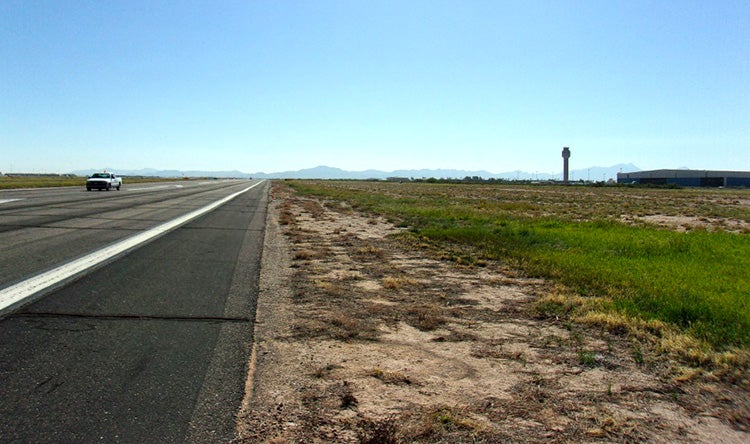Tucson International Airport Runway 12R/30L Design

Tucson International Airport Runway 12R/30L Design
Coordination and Flexibility Key in Largest Project in Airport’s History
Updating an airport designed seven decades ago, the Tucson Airport Authority launched a $360 million airfield safety enhancement program. The largest project in the airport’s history, it is meant to limit runway incursions and upgrade the airfield geometry to address these safety concerns.
HDR was chosen to lead the design of new Runway 12R/30L and associated parallel taxiways at the airport — the centerpiece of the airfield program. The new runway will replace an existing narrow general aviation runway with a new 10,996-foot commercial runway. It also includes a full-length centerline parallel taxiway, new outboard parallel taxiway and new connector taxiways.
The new runway provides a second parallel runway for commercial and military flights at Tucson International. As a joint civil-military airport, Tucson is host to Morris Air National Guard Base, home of the 162nd Wing. Expanding capacity is important particularly in the busy summer months, during routine maintenance or in case of any incidents that impact the airport’s one full-length runway. Adding a second runway parallel to Runway 11L (future RW 12L) will allow operations to continue without interruption, while increasing the overall safety of the airfield.

Our engineers and experts are providing airfield design, drainage and hydrology design, airfield lighting and signage, as well as planning for arresting systems used by military aircraft that share the airfield. Pavement design is being informed by in-depth pavement sensitivity analyses using a variety of aircraft traffic models, including modeling that shows the impact of larger aircraft not yet common at the airport. In addition, we developed numerous construction phasing alternatives based on funding timing and technical issues such as maintaining airfield operations and balancing of earthwork.
The new runway and associated taxiways are being delivered through a construction manager at-risk delivery method that has prioritized collaboration. As changes are requested or issues arise in the field, our design team sits down with the contractor and gets their input. As a result of suggestions from contractors, we’ve altered our design on some items to be more cost effective.
Coordination has also been important beyond the runway project. While the new runway is the primary component of the airport’s Airfield Safety Enhancement Program, three other projects are also under design at the same time, all of which connect to and impact the ASE project.
Project design was completed in early 2023 and construction is now ongoing on project components, with the runway tentatively expected to be completed by the end of 2025. Moving forward, our team will provide construction administration services, submittal reviews and respond to RFIs as the project’s engineer of record.











